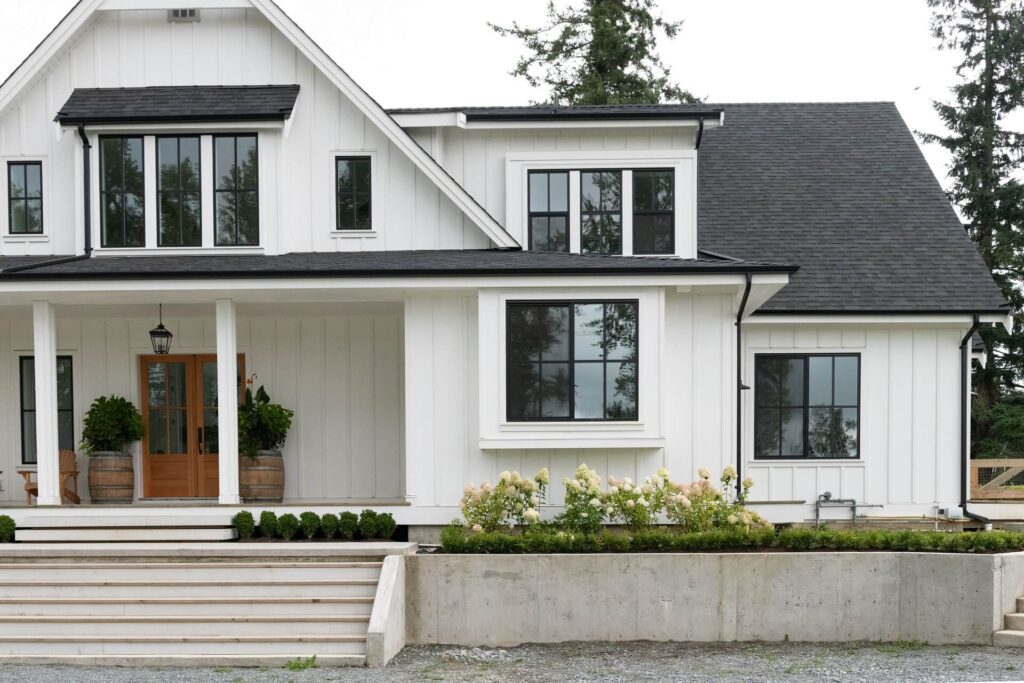A second story addition is a major home renovation project that can significantly increase your living space and enhance the value of your property. However, it can also be complex and challenging. To ensure a smooth construction process, careful planning, effective communication, and proactive management are essential. This comprehensive guide will provide you with tips and strategies to help you navigate each stage of your second story addition, from initial planning to final completion.
Initial Planning
Define Your Goals
Before you begin, it’s important to clearly define the objectives of your second story addition. Consider the following:
- Purpose: Why do you need the extra space? Is it for additional bedrooms, a home office, or a playroom?
- Budget: How much are you willing to spend? Establish a realistic budget that includes a contingency fund for unexpected expenses.
- Timeline: When do you want the project to start and finish? Be flexible but have a clear timeframe in mind.
Research and Inspiration
Gather inspiration from various sources to help shape your vision. Consider:
- Magazines and Websites: Look for design ideas and trends.
- Home Tours: Visit homes with similar additions to see what you like.
- Consult with Professionals: Architects and designers can provide valuable insights and suggestions.
Hiring the Right Professionals
Select an Experienced Architect
An architect can help turn your vision into detailed plans and ensure that your addition is structurally sound and compliant with local building codes. Look for:
- Experience: Find an architect with experience in second story additions.
- Portfolio: Review their past projects.
- References: Ask for and check references from previous clients.
Choose a Reliable Contractor
Selecting the right contractor is crucial for the success of your project. Follow these steps:
- Get Recommendations: Ask friends, family, and neighbors for referrals.
- Interview Multiple Contractors: Meet with several contractors to discuss your project and get estimates.
- Check Credentials: Verify licenses, insurance, and certifications.
- Review References: Speak with past clients to gauge their satisfaction with the contractor’s work.
Create a Detailed Contract
A comprehensive contract can prevent misunderstandings and disputes. Ensure it includes:
- Scope of Work: Detailed description of the work to be done.
- Timeline: Start and completion dates.
- Payment Schedule: Clear terms for payments.
- Warranties: Any warranties on work and materials.
- Change Orders: Procedures for making changes to the project.
Preparing for Construction
Secure Necessary Permits
Check with your local building department to determine what permits are required for your project. Ensure all necessary permits are obtained before construction begins to avoid delays and fines.
Plan for Temporary Living Arrangements
Construction can be disruptive, especially when it involves major structural changes. Consider:
- Living Off-Site: Temporarily relocating if the construction will make your home uninhabitable.
- Creating Safe Zones: Designating areas in your home that will be off-limits to construction.
Communicate with Your Neighbors
Inform your neighbors about your construction plans. Providing them with details about the project timeline and any potential disruptions can help maintain good relationships and minimize complaints.
Managing the Construction Process
Regular Site Visits
Regularly visiting the construction site allows you to monitor progress and address any issues promptly. During your visits:
- Check Work Quality: Ensure the work meets your standards and specifications.
- Review Progress: Compare the progress with the project timeline.
- Address Concerns: Discuss any concerns with your contractor immediately.
Stay Flexible and Adaptable
Construction projects often encounter unexpected challenges. Be prepared to adapt and make decisions as needed. Keeping an open mind and staying flexible can help you navigate unforeseen issues smoothly.
Maintain Clear Communication
Effective communication is key to a successful construction project. Ensure you:
- Establish Communication Channels: Decide on preferred methods of communication (e.g., phone, email, in-person meetings).
- Schedule Regular Updates: Set up regular meetings with your contractor to discuss progress and any issues.
- Document Everything: Keep a record of all communications, decisions, and changes.
Managing Changes and Costs
Control Change Orders
Changes to the original plan can lead to delays and increased costs. To manage change orders effectively:
- Minimize Changes: Stick to the original plan as much as possible.
- Document Changes: Ensure all changes are documented in writing and include details of any additional costs or time required.
- Approve Changes Promptly: Review and approve change orders quickly to avoid delays.
Monitor Budget and Expenses
Keeping track of your budget and expenses is crucial to avoid cost overruns. Strategies include:
- Track Spending: Regularly review invoices and compare them to your budget.
- Keep Contingency Funds: Set aside a contingency fund for unexpected expenses.
- Avoid Unnecessary Upgrades: Stick to your budget and avoid costly upgrades that are not essential to the project.
Final Stages and Completion
Conduct a Thorough Final Inspection
Before finalizing the project, conduct a detailed walkthrough with your contractor. During the inspection:
- Check All Work: Ensure all work is completed to your satisfaction and according to the contract.
- Create a Punch List: List any remaining items that need to be addressed.
- Verify Permits and Inspections: Ensure all permits and inspections are completed and approved.
Finalize Payments
Once all work is completed and you are satisfied, make the final payment according to the terms of your contract. Ensure:
- All Work is Completed: Do not make the final payment until all work is done and any issues are resolved.
- Warranties and Guarantees: Obtain all warranties and guarantees in writing.
Post-Construction
Celebrate Your New Space
Take the time to enjoy and appreciate your new living space. Consider:
- Hosting a Gathering: Invite friends and family to celebrate your new addition.
- Personalizing the Space: Decorate and furnish the new rooms to make them feel like home.
Maintain Your Addition
Regular maintenance is essential to keep your new addition in good condition. Tips include:
- Regular Inspections: Periodically inspect the addition for any signs of wear or damage.
- Routine Maintenance: Follow a regular maintenance schedule for cleaning, painting, and other upkeep.
- Address Issues Promptly: Fix any issues as soon as they arise to prevent further damage.
Tips for a Smooth Construction Process
Plan Thoroughly
Thorough planning can help prevent many common issues. Ensure you:
- Define Your Project Scope: Clearly outline what you want to achieve.
- Set a Realistic Budget: Include a contingency fund for unexpected expenses.
- Create a Detailed Timeline: Plan each phase of the project and set realistic deadlines.
Choose Quality Materials
Using high-quality materials can enhance the durability and appearance of your addition. Consider:
- Durability: Choose materials that will stand the test of time.
- Aesthetics: Select materials that complement your home’s existing design.
- Energy Efficiency: Consider materials that improve energy efficiency, such as insulated windows and doors.
Stay Organized
Keeping organized can help you stay on top of the project. Tips include:
- Maintain Records: Keep all contracts, receipts, and communications in one place.
- Use Project Management Tools: Utilize tools and apps to track progress and manage tasks.
- Create Checklists: Make checklists for each phase of the project to ensure nothing is overlooked.
Focus on Safety
Safety should be a top priority during construction. Ensure:
- Secure the Site: Keep the construction area secure and clearly marked.
- Follow Safety Protocols: Ensure all workers follow safety protocols and wear appropriate gear.
- Protect Your Family: Keep children and pets away from the construction site.
Expect the Unexpected
Construction projects often encounter unexpected issues. Be prepared to:
- Stay Flexible: Be ready to adapt to changes and make decisions on the fly.
- Maintain a Positive Attitude: Keep a positive outlook and focus on the end goal.
- Seek Solutions: Work with your contractor to find solutions to any problems that arise.
Conclusion
A second story addition is a significant undertaking that requires careful planning, effective communication, and proactive management. By following the tips and strategies outlined in this guide, you can navigate the construction process smoothly and achieve a successful outcome. From initial planning and selecting the right professionals to managing the construction process and enjoying your new space, each step is crucial to the success of your project. Taking the time to plan thoroughly, choose quality materials, stay organized, and focus on safety can help ensure that your second story addition enhances your home and meets your needs for years to come.

Expand Your Home with a Second Story Addition by Red White & Blue Construction!
Thinking about a second story addition in Lafayette, CA? Red White & Blue Construction is your go-to expert for transforming your home with a custom second story. Enhance your property with an addition that adapts to your evolving lifestyle needs. Known for our proficiency in second story projects, we are dedicated to turning your vision into reality—whether it’s an extra bedroom, a luxurious master suite, or a spacious home office. Our established reputation in the Bay Area highlights our commitment to excellence, craftsmanship, and the high standards we bring to every project.
At Red White & Blue Construction, we are more than just builders; we are the architects of your dream living space. With transparent pricing and exceptional client service, a second story addition is not just an extension—it’s a valuable investment in your home’s future. Trust Red White & Blue Construction for your second story addition. Start your journey of Home Enhancement Excellence and contact us today!
Disclaimer
The materials available on this website are for informational and entertainment purposes only and not to provide advice. You should obtain advice concerning any particular issue or problem from a professional. You should not act or refrain from acting based on any content included in this site without seeking legal or other professional advice. The information presented on this website may not reflect the most current building developments. No action should be taken in reliance on the information on this website. We disclaim all liability concerning actions taken or not taken based on any or all of the contents of this site to the fullest extent permitted by law.





